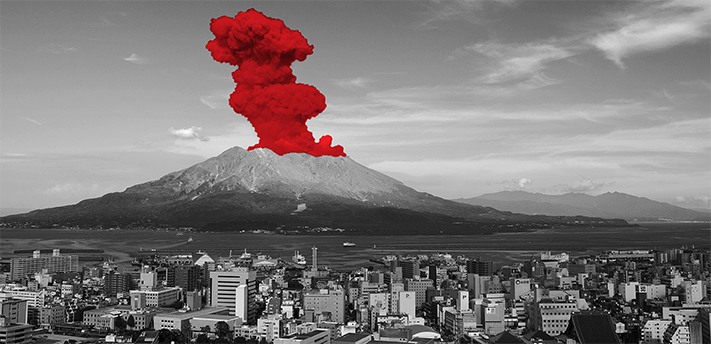Natural Disasters
YOUR PARTNER IN ENVIRONMENTAL DISASTER RECOVERY
When volcanos erupt, huge quantities of volcanic ash will spew into the atmosphere. The volcanic ash is then transported by the prevailing winds over long distances, contaminating buildings and equipment. The composition of the volcanic ash varies, depending on the composition of the magma. Generally, it consists of 40%-60% of silica, minerals and fine rock particles. Volcanic ash is heavy and does not dissolve in water. In fact, volcanic ash will absorb water, making it heavier. Volcanic ash will solidify when dry.
DAMAGE TO BUILDINGS
Damage to buildings and structures from volcanic ash can vary from minor cosmetic damage to building exteriors to major structural damage in severe cases.
- Thick volcanic ash on the roofs can result in excessive loading, causing roof collapse. This is especially so, when heavy rain on the ash deposits make the ash heavier. The drying of the ash caused them to solidify to become nearly like concrete, putting extra stress on the roof.
- Ash may block gutters and downpipes and clog up the drainage system. This can result in localised flooding and water damage.
- Air-conditioning systems can be affected due to ash obstructing the filters, condensers and air intakes.
- Metal roofs, fastening and cladding may be vulnerable to corrosion when exposed to wet ash.
DAMAGE TO EQUIPMENT
Although equipment is well-protected from airborne contaminants, there are still likely to be some damage to the equipment.
- Volcanic ash is abrasive by nature and can cause premature wear and tear to mechanical components, in particular, bearings, switches, storage media and electrical contacts.
- Ash particles may block ventilation grills and jam cooling fans, increasing the operating temperatures which may trigger overheating shutdowns.
- Wet volcanic ash may cause short circuits across exposed electrical contacts.
- Long term exposure to volcanic ash can cause corrosion to the equipment (depending on volcanic ash composition).
HOW BELFOR CAN HELP
Our team of experts have helped many companies recover from volcanic ash contamination. We have developed techniques for ash decontamination. We will start with dry cleaning to remove the bulk (about 90%) of volcanic ash using specialised cleaning equipment. Although volcanic ash is insoluble in water, very fine particles will still require a multi-steps cleaning process on surfaces and interior of the equipment to remove them. We use BELFOR patented cleaning agent with wet cleaning techniques to remove the fine particles to ensure that a thorough job is done.



